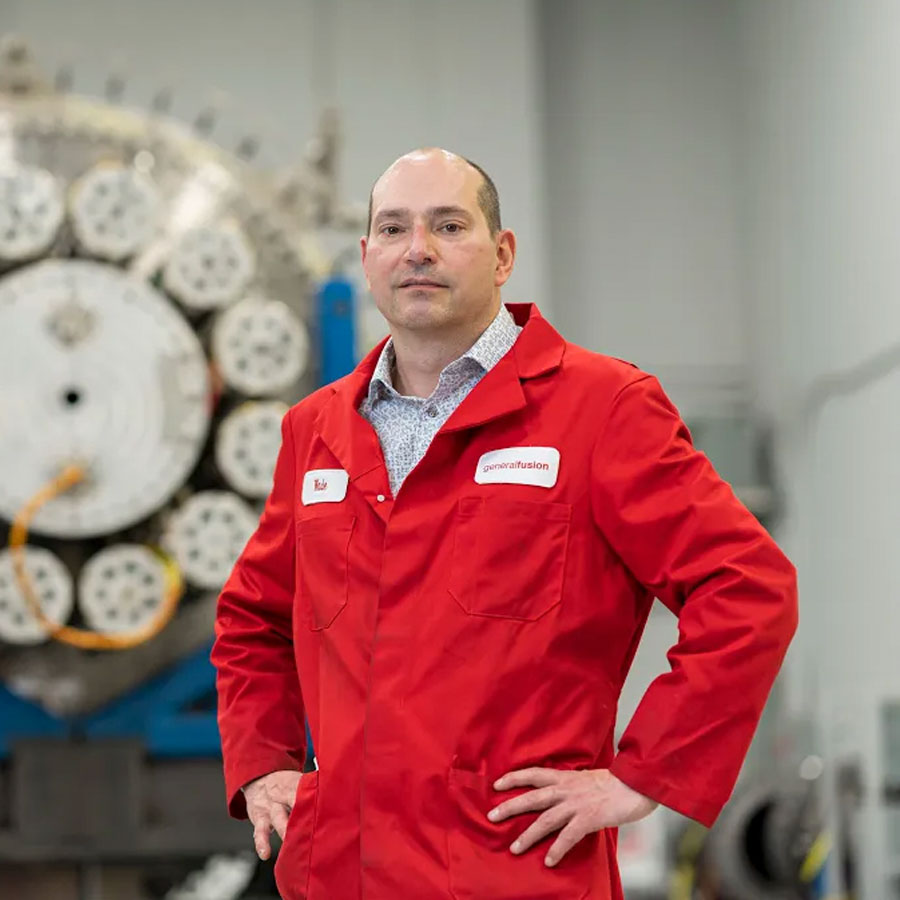By Michael Delage, Chief Technology Officer at General Fusion and Dave Plant, Director of Program Management.
General Fusion’s system, with its piston-studded spherical chamber, has an industrial look about it. Hundreds of powerful pistons, driven by steam, will push down on a liquid metal liner, which in turn pushes on a plasma of superhot hydrogen gas, compressing the fuel to fusion conditions. Underneath the pragmatically industrial exterior, however, are cutting edge electronics that give these pistons an incredible level of control.
To create fusion with this system you need to keep the plasma the right shape while compressing it. That means precisely controlling when each of those hundreds of pistons will push down on the liquid metal. General Fusion has developed the technology to achieve this level of precision and has demonstrated it at large scale. We’re going to look at how this works, and what’s next for this technology as we move toward a fusion demonstration plant.
You may be familiar with how pistons work inside a diesel engine, and the concept is similar. One of the big differences is that instead of having one piston pushing on the fuel, a General Fusion power plant will have hundreds, arranged around the spherical chamber to push down at the same time.
When we say that General Fusion pistons need to all push down at the same time, we really mean it. Our margin for error between pistons is only ten microseconds. To put it into perspective, ten microseconds is ten times shorter than what is measured in a Formula 1 race. Picture every car in an F1 race crossing the finish line, at the same time, in a tie that’s too close to call. That is the sort of precision we need to achieve with every pulse.
The reason we need this level of precision is to maintain that plasma shape. Magnetic fields inside the plasma act like insulation to hold the heat in, but if the plasma shape gets distorted those fields get scrambled, the plasma loses its heat into the liquid metal, and consequently doesn’t reach fusion temperatures. Compressing the plasma is like trying to squeeze a balloon in your hands – it wants to shoot out the sides. The pistons are like fingers, pushing down on the plasma and holding it in place.
By developing high speed control electronics that synchronize the position of the pistons during compression, General Fusion has achieved the level of precision required to hold the plasma stable. These high-speed servo systems are an example of new enabling technologies that allow fusion energy development to move faster than ever before. Using these electronics, General Fusion has achieved piston timing of plus/minus 5 microseconds, well within the margins of what we need to symmetrically compress and heat the plasma.
General Fusion’s digital servo controls use electromagnets to control the release of the pistons, which are then accelerated by high pressure gas. Computers watch the position of the pistons and regulate their speed by increasing or decreasing the pressure of the gas pushing on them. This control phase takes place during the few milliseconds that it takes for the piston to travel a full stroke, and results in all of the pistons arriving at the same time.
An important consideration for a power plant is that the control system can adapt to changes in friction as the pistons age and wear. As we are pursuing a practical fusion power plant solution, this was a crucial feature of the design of this system – as a piston’s behaviour changes with time, the electronic control system can adapt and ensure that proper synchronization with the rest of the piston array is maintained, even after millions of cycles.
In addition to testing single pistons, General Fusion has also built a multi-piston demonstration with 14 pistons.
This technology will be employed on the company’s upcoming fusion demonstration plant, which will combine piston and plasma technology at a scale relevant to a power plant, using liquid metal to compress and heat the plasma to fusion conditions.
Interested in more detail? You can dive deep into our technology in our research library.
This article first appeared in the September 2018 edition of General Fusion’s quarterly Matters of State newsletter. Subscribe here to receive the next edition.



